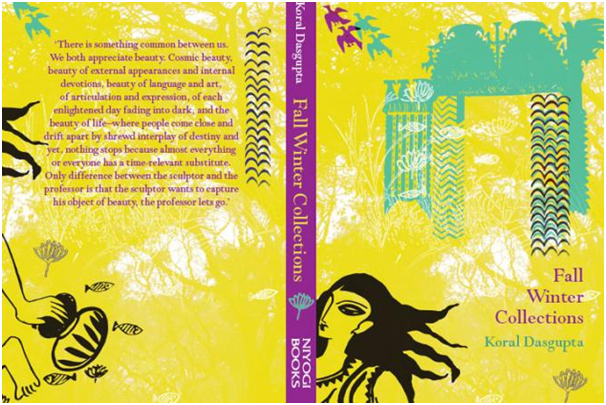Where The YIN Meets The Yang...Or Does It?

In my long life I have been to Kolkata only twice. The first time it was to participate in a theatre festival when we staged a play, won some awards and returned home.
The second time I went to see a dear friend who promised to take me around a bit of West Bengal. We did make it to Bishnupur, the beautiful terracotta temple town some 130 km from Kolkata but a sprained ankle made it impossible to fullfil the dream of walking around Santiniketan in the footsteps of Rabindranath Tagore who founded the Vishwa Bharati University there in 1921.
That life long regret is tamed now as I turn over the last page of Fall Winter Collections, Koral Dasgupta's debut novel of 235 pages.
Inspired by the three years the author spent on the same campus, a lot of the narration is perhaps her own story of the blooming into life of a new age professional woman who is happy with her work and happier to live by herself in the company of art, music and poetry.
But this is only half the story of the book. This is the yin side of the story that is shown to perfect itself in unconscious anticipation of a union with the yang, its essential other half. The read evokes imageries from chaap tilak sab cheenii, the words of a medieval poet who concludes on hindsight that there is little need for gold and silver, the satin and silk adornments when a locking of looks is all that is needed for love to merge with beloved into the same eternal ecstasy.
This is one of the most mystical poems in our midst where half the life force is said to spend an entire lifetime preparing itself to return to a consciousness of non duality after a meeting with the other half.
The breathlessness in the book comes from witnessing the character of an ultimate woman rise and rise till the nari or feminine in her is transformed into ardhanareshwara, half woman and half man also the most complete form of existence.
The book alternates between her story and his story till both narrations merge towards the end into one future like two different tributaries that eventually drown into the one and only ocean of life. Both protagonists address the reader separately, telling their respective story against the lush landscape of Santiniketan where both the mind and body is naturally inspired to flower into ecstasies unimaginable.
For example read him aimlessly explore the place one evening:
Santiniketan is very green and close to nature. As I walked, I could hear a tanpura and mridang playing afar...
As I unlock my door I realise that the moon is shining beautifully bright. It has entered my apartment through the open doors and window. There is a power cut here. Before bolting my door I look back at Mrigya; it is clearly visible from my first floor entrance! And I am shocked once again. The lady is sitting on the terrace with her hair let loose and flowing all around. She is looking scarily isolated. The half visibility offered by a soft and majestic moonlight made a mystic sight out of it.
In one chapter of her own she says:
...the 7th day of Poush as per Bengali calendar celebrates Debendranath Tagore's birthday at Santiniketan. The evening before everyone gathers at Gour Prangan for Baitalik, which is basically going around the campus in a procession while singing Tagore's compositions. This formally starts the annual festival...Every year I get up at 4.00 am to take a bath and to prepare to attend this occasion at 5.00. I love being here. after Baitalik is over I never return home. Instead I go for long walks. I stop only when I can walk no more. The soil is red in this part of the country. And it has a specific texture. In spite of the developments catching up to give it a city status, the flora, fauna and landscape here is too stubborn to let go of its originality.
And together they come together to conclude in one voice:
There is something common between us. We both appreciate beauty. Cosmic beauty, beauty of external appearances and internal devotions, beauty of language and art, of articulation and expression, of each enlightened day fading into dark, and the beauty of life-where people come close and drift apart by shrewd interplay of destiny and yet, nothing stops because almost everything or everyone has a time-relevant substitute. Only difference between the sculpture and the professor is that the sculpture wants to capture his object of beauty, the professor let's go.
The Fall Winter Collections by Koral Dasgupta is published by Niyogi Books, India 2015



